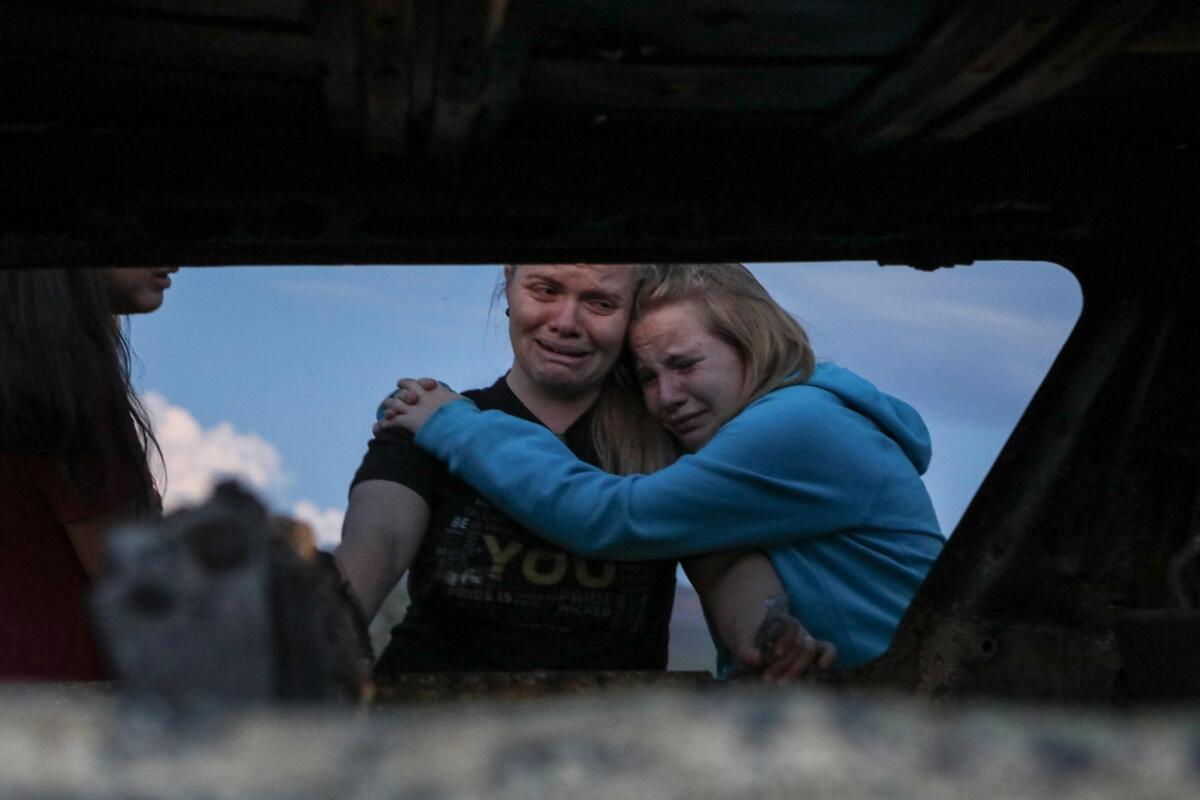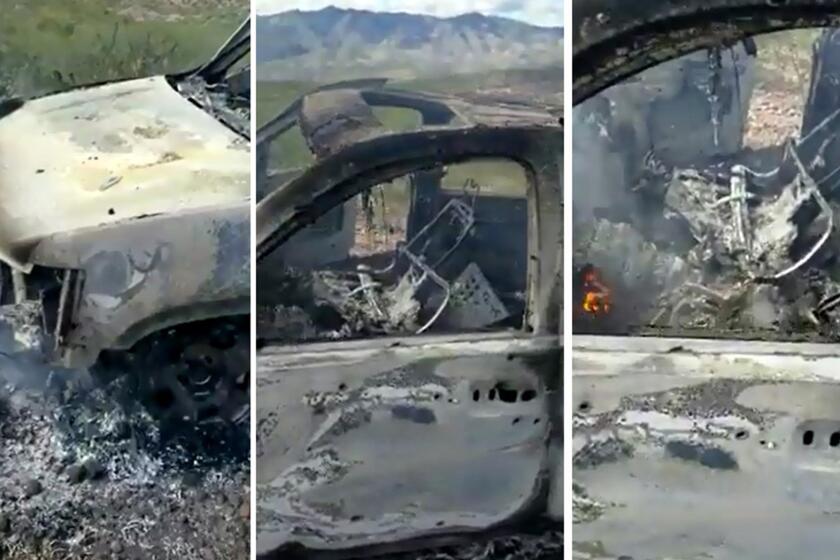Massacre of U.S. citizens puts spotlight on Mormon community with deep roots in Mexico

- Share via
The roadside killings of nine U.S. citizens in northern Mexico has brought renewed attention to the scattered communities of Mormons who settled in the country more than a century ago to escape persecution.
The three women and 14 children whom assailants ambushed Monday as they drove toward Arizona from the town of Bavispe in Sonora state included descendants of a fundamentalist Mormon community that has lived in the country for decades.
Early Wednesday, criminal investigators in northern Mexico said a suspect had been arrested and was under investigation for possible connections with the deaths. A Mexican official had earlier said the killers might have mistaken the family for members of a rival drug cartel.
Some of the victims shared the last name LeBaron. They were related to a prominent fundamentalist Mormon family by the same name, said Daniel LeBaron, a cousin of one of the victims, Rhonita Maria Miller. Daniel LeBaron lives in Colonia LeBaron in Chihuahua state, a community established by fundamentalist Mormons in 1924 that has close ties to the LeBarons of Bavispe.
The LeBarons are among “a handful of major groups of fundamentalists,” said Patrick Mason, a historian of Mormonism at Utah State University. But, he added: “The LeBaron name in recent decades has been most often linked to violence. Unfortunately, this incident only adds to that association.”
The victims, three women and six children, were members of a fundamentalist Mormon sect that has been based for decades in a remote stretch of Mexico southwest of El Paso.
The family is perhaps best known for a series of killings perpetrated in the 1970s and 1980s, in both Mexico and the United States, by Ervil LeBaron — once called the “Mormon Manson” — and a group of his followers.
In 1972, two followers of Ervil LeBaron allegedly shot his brother, Joel, to death after the brothers argued over leadership of their religious faction. Ervil was convicted of the crime, but the conviction was later overturned. He later was tried and convicted in the 1977 murder of rival polygamist leader Dr. Rulon Allred. In 1993, his story was turned into a TV drama, “Prophet of Evil: The Ervil LeBaron Story.”
In 1993, a federal jury in Texas convicted three members of an offshoot of the community of LeBarons in the deaths of three former members and an 8-year-old child. One expert estimated that members of the group had killed as many as 30 people over the years.
Fundamentalist Mormons share origins with the Church of Jesus Christ of Latter-day Saints but broke away from it in the early 20th century after the U.S. government outlawed polygamy and the Mormon Church banned the practice.
“The government had passed a series of punitive laws and had begun seizing church properties and threatened to seize church temples,” Mason said. “The president of the church in 1890 said he had a vision from God that temples would be taken away and it was better to give up polygamy so Mormons could keep the heart of their faith and not be on the run.”
Mormons who supported polygamy had been fleeing to Mexico and Canada since the 1880s. In Mexico, polygamist Mormons bought 50,000 acres in the state of Chihuahua, where they settled along the Piedras Verdes River in a mountainous, remote region. Mormons also formed communities in Sonora state. Over time, many found success as farmers and ranchers.
One February morning 100 years ago, a 29-year-old man named Peter Skousen left his home in Snowflake, Ariz., and headed for Mexico.
They included Miles Park Romney, the great-grandfather of Sen. Mitt Romney, whose father, George Romney, was born in Mexico. Miles Park Romney, who had four wives, moved to rural Chihuahua in 1885. George Romney would eventually return to the United States, where he was elected governor of Michigan and unsuccessfully sought the Republican presidential nomination in 1968.
Mitt Romney, who was the Republican standard-bearer in 2012, is a member of the LDS Church, not the fundamentalist communities. His relatives in Mexico abandoned polygamy generations ago and still run farmland in northwestern Chihuahua state.
Most members of the extended LeBaron clan no longer practice polygamy and the family today includes Catholics and people who are not religious.
The LDS Church has made efforts over the decades to differentiate itself from fundamentalists but frequently faces confusion because of their shared history.
“We are heartbroken to hear of the tragedy that has touched these families in Mexico,” said LDS Church spokesman Eric Hawkins. “Though it is our understanding that they are not members of the Church of Jesus Christ of Latter-day Saints, our love, prayers and sympathies are with them as they mourn and remember their loved ones.”
Mason, who wrote “The Mormon Menace: Violence and Anti-Mormonism in the Postbellum South,” said descendants of fundamentalist Mormon communities in Mexico today often include dual U.S.-Mexican citizens who frequently travel across the U.S.-Mexico border to visit relatives. The diverse group includes those who practice polygamy and others who don’t, and some even attend LDS services. Interracial and interfaith marriages have grown in popularity.
“They tend to speak English and Spanish, live in extended communities with large, often-related families and, for the most part, desire to not get into much trouble,” Mason said. He said there are thousands of fundamentalist Mormons in northern Mexico, although a reliable count has not been done. There are more than a million LDS Church members in Mexico, the largest number of adherents to the faith group after those in the United States.
The extended LeBaron family has spoken out for years against drug cartel violence in Mexico and for looser gun laws, saying its members need to protect themselves. The region where the attack took place Monday is disputed by two criminal groups, the Sinaloa cartel and La Linea, which is linked to the Juarez cartel.
In 2009, family member and anti-violence activist Benjamin LeBaron was shot dead after speaking out against traffickers who kidnapped his brother for a $1-million ransom.
Times staff writer Kate Linthicum in Mexico City contributed to this report.
More to Read
Sign up for Essential California
The most important California stories and recommendations in your inbox every morning.
You may occasionally receive promotional content from the Los Angeles Times.












